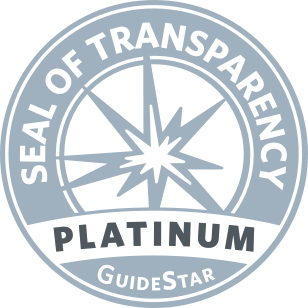
Presented as “Biofeedback, Incontinence, and the Patient’s Perspective” at a symposium on Treatment of Bowel, Bladder, and Pelvic Floor Disorders, held June 23–26, 2005, at Marquette University, Milwaukee, WI
This article also available in Spanish.
A personal account from the Founder of IFFGD
I would like to thank Jeannette Tries for the invitation to be here with you this morning. I have been asked to speak to you from the patient perspective on living with incontinence and pelvic floor disorders. In the spirit of full disclosure I have been a patient of Jeannette’s in the past and I can say that she is someone who gave me my life back when others had dismissed my health problems and had no more time for me.
In some ways my life has become very unique. Let me begin by assuring you that I consider myself to be a very fortunate individual and in many ways as one friend has described it, “I have a big life,” a life that I never envisioned for myself. However, there were days when I felt that I would never leave my home, I felt that my life was over. I could not imagine how I could continue on in life as a person living with bowel incontinence.
Not everyone has been as fortunate as I in the ability to cope and manage incontinence. Bowel or bladder incontinence is a 24 hour, seven day a week challenge. One never escapes it, for many it is even in our dreams.
In 1985 with the delivery of my son, I sustained a 4th degree laceration. I subsequently had two repair surgeries that were unsuccessful in restoring continence. My life changed in one moment of time, from a continent person with a full life, anticipating the birth of my son with an expectation that both mother and child would do well, to a life that no longer holds any spontaneity but rather a life that is focused on control.
Incontinence that results from vaginal delivery is something that was seldom discussed in 1985 and unfortunately we have not made much progress in including it in discussions with pregnant women today. That is a topic for another day but the result is millions of women who live a life with a secret, feeling that this is a condition that they need to hide from just about everyone.
Need for Awareness
We have made progress with our awareness around urinary incontinence, but anal incontinence continues to remain hidden. It is hidden on a lot of different levels within society so we really don’t have a clear understanding of the true prevalence.
Unfortunately there persists a practice within the medical community of not even asking the question regarding loss of stool or inability to control a bowel movement. If the medical practitioner doesn’t ask the question often times the patient will not reveal this. They may reveal urinary incontinence, or “overactive bladder,” but not anal or fecal incontinence. An individual who is incontinent may say they can’t control gas or that they have diarrhea a lot.
This is where the incontinence gets lost in the translation. Patients and practitioners often refer to things differently attaching their own interpretation rather than working with the patient to gain a better understanding of the problem and the impact on their quality of life.
Biofeedback and Treatment for Incontinence
Your presence at this course is significant; you have chosen to expand your knowledge of biofeedback in a way that few do. I have been on the receiving end of biofeedback and treatment for incontinence, at highly respected centers, that would be considered antiquated to put it politely.
There are centers around the world that pride themselves on treating incontinence, yet that have therapists who are inexperienced or limited in their knowledge base to say the least. The presumption is that even if they have provided no solution for the patient due to their personal lack of knowledge, at least they do no harm. That presumption is in error. Patients who are incontinent often feel helpless; providing no solution only reinforces that feeling of helplessness and puts the patient at risk loosing hope.
Biofeedback is about more than having a patient squeeze their anal sphincter and hold it. Often times, patients are left to their own devices alone in a room and told to do Kegel exercises with no real direction. They may have some form of surface sensor attached or even a probe inserted while the therapist has little knowledge of what they are measuring and what it ultimately represents in the care and outcome of the patient.
For a person who is incontinent, replacing feelings of helplessness with a measure of empowerment, with teaching a person that they can take steps to try to better manage their incontinence, can be as important as improving continence. For many individuals with fecal incontinence their care has been focused on the containment of fecal matter, with little to no attention given to the psychological impact, social considerations, and quality of life for that person.
Advice for Care Givers
It is important for care givers to recognize the deeply personal impact that incontinence can have on an individual’s life. As a care giver I would urge you to try to understand the process of stigmatization as it applies to the experience of individuals with fecal incontinence.
There is the potential for the symptom of incontinence to serve as a metaphor for the personality of the individual who has it. The disorder is perceived as a metaphor for an impaired identity: the patient is seen as “an incontinent,” one who breaks boundaries. No patient should bear the burden of that metaphor in addition to the actual illness or disorder.
Continence has been written about in the following way, “The storage of stool is utterly necessary to preserve the veneer of civilization.” It is no wonder that a strong social stigma attaches to fecal incontinence. One consequence is an atmosphere of secrecy about the condition causing many people to refrain from seeking treatment.
Talking about Incontinence
It takes courage for a person to say that they experience incontinence. To that person, saying they have incontinence may seem more like a confession that a statement of fact. Too often, after summoning the courage to talk about their incontinence the person is met with disinterest or lack of understanding – a response that only heightens feelings of hopelessness or isolation.
It is important that an acknowledgement by an individual of their incontinence be met with a sympathetic and supportive response. Patients may be concerned about their ability to just get to an appointment with a caregiver without having an incontinent episode. Yet they are often told, to just put on a diaper and don’t worry about it.
The reference to wearing adult diapers can be very demeaning to incontinent adults. These products are best referred to as protective undergarments or absorbent products. This may seem like a simple thing but it carries meaning beyond the words.
Living with Uncertainty
The uncertainty of living with the ever present possibility of having an episode of incontinence can be disabling. Whether an episode of incontinence occurs once a day, or once a week, the uncertainty of when the next episode will happen, and vigilance that accompanies that uncertainty, occurs every waking minute.
It is often difficult for people who do not have the disorder to understand the impact this has. The burden is exhausting. Most people who experience incontinence feel that much of their life revolves around being in close proximity to a bathroom.
A sense of freedom and of being in control comes with having a bowel management program that works for the individual, and with being prepared for an incontinent episode in a public place. Incontinence in the presence of someone else is generally the greatest fear that people have.
That fear comes from the feelings of shame, embarrassment, humiliation, and anger that are generated by an episode of incontinence. It is difficult to control this range of emotion and manage to get to the bathroom, clean up, change clothes, and return to an activity as if nothing had happened – while at the same time knowing that it could happen again at any moment.
Older adults may also be confronted with not being able to get to the bathroom as quickly, being less agile, and perhaps having to rely on someone else to help them. All of this adds to the frustration of coping with incontinence.

Coping with Incontinence
For an individual, coping with incontinence is dependent on a number of different things. Acceptance and support are primary factors in how one copes. Adjustments and compromises may have to be made. In order for an individual to accept this disorder they need to know that the incontinence can be managed and to feel assured that the best possible quality of life is still available to them given some limitations.
The degree of acceptance among different people will vary. Some people feel as if their life is over and give in to the feelings of lack of control. The incontinence is unacceptable and they lack the ability to manage this on their own. As a result, they become more isolated and reclusive. They may become angry; anger can be constructive for some. Or they may become passive and make little or no attempt to help themselves.
There is a loss associated with incontinence. Some people may need professional help in making adjustments. For some they may feel as if their entire identity has been changed as a result of their incontinence.
I talk to many people who are looking for help to regain control of their bowel. It takes a motivated person to follow through with biofeedback and a bowel management program. We often find ourselves making decisions out of a sense of desperation. So it is imperative that you work with patients providing guidance in the best way possible.
To all of society we look healthy and normal until our disability rears it ugly head and our secret is exposed. We work very hard on not letting the world see what we live with every day. The amount of energy that is spent with the juggling act of getting through a day can be enormous just so the public is not exposed to our disability.
I wish you success as you treat future patients, as the sheer human potential that resides in many of your patients rests in being able to adjust and cope with life as an incontinent person or with the resolution of their symptoms. Thank you.
The Need for More Research – How You Can Help
IFFGD participates in and encourages support of scientific inquiry and research. Although the need has been demonstrated, functional GI disorder research remains severely underfunded.
There are a growing number of clinicians and investigators who are striving to learn more about the functional gastrointestinal disorders. They need research funding. You can help. Working together, we can change the way these disorders are viewed, managed and treated. To know more about funding needs, visit: How to Make a Difference.
Adapted from IFFGD Publication: Biofeedback, Incontinence, and the Patient’s Perspective by Nancy J. Norton, President, International Foundation for Functional Gastrointestinal Disorders, Milwaukee, WI.









